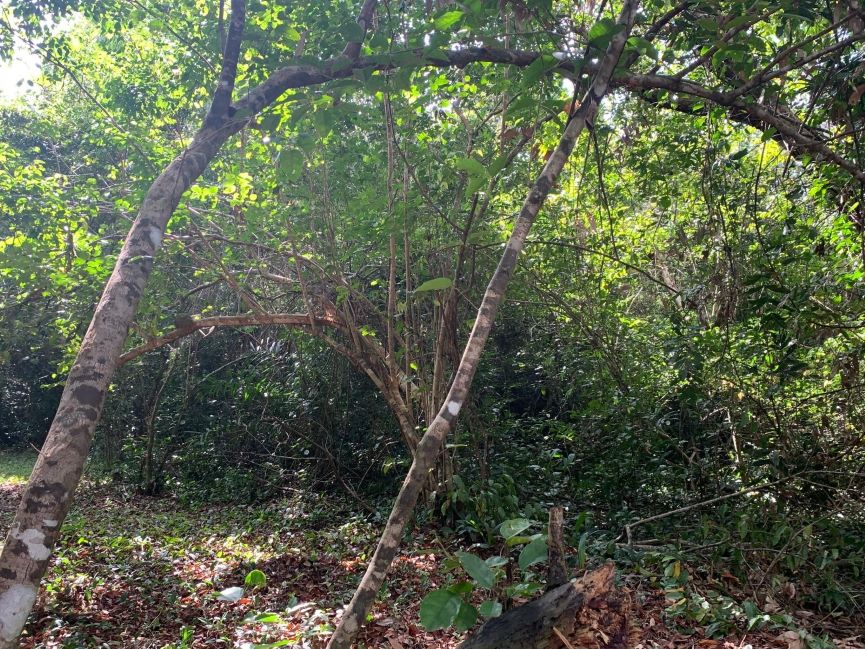Blog |
Managing with mangroves: cost-effective coastline protection for Ghana
The objective of the study is to estimate the total economic value (TEV) of mangrove areas in Ghana.
Ghana’s coastal ecosystem is in urgent need of a comprehensive management policy that works with, rather than against, nature. The coastal zone is home to one-quarter of the country’s 31 million people and accounts for nearly four-fifths of its industry. But increasing pressure on the coastal ecosystem, including the destruction of mangrove swamps, is threatening both the population and the economy. Between 1980 and 2014, one-third of Ghana’s 181 km2 of mangrove lands was lost to oil and gas production, mining, urbanization, and agricultural conversion, among other short-term development priorities. Today, most mangrove stands are secondary growth with degraded faunal composition resulting from intensive direct use as fuelwood for fish smoking and salt extraction. These mangrove stands are found mainly around lagoons in the western coastal area and bordering the lower reaches of the Volta River and delta in the eastern area, which is more vulnerable to inundation from predicted sea-level rise.
Mangroves, integrated with hard infrastructure, offer a sustainable and environmentally friendly, coastal-protection solution. Current coastal management approaches in Ghana are mostly site-specific and limited to hard-engineering structures like groynes and revetments, which are having a knock-on effect. Construction of the Keta sea defense wall, for example, has led to a 50 percent increase in downdrift erosion toward the Ghana-Togo border. Planting mangroves in the foreshore could mitigate such problems because, unlike fixed infrastructure, mangroves experience vertical accretion over time and so maintain their position relative to rising sea level, provided sufficient sediment is available. As a complement to engineering solutions, mangroves can attenuate the height of storm-induced swells, which lessens the damage to hard infrastructure and the cost of investment and maintenance.
A recent World Bank study provides evidence on the cost-effectiveness of integrating mangroves into coastal-management policy interventions. The study estimated the total economic value of Ghana’s current mangrove plantations, considering their full range of benefits—direct and indirect private uses, social uses, and social non-use options. Those estimated values were then used in economic cost-benefit analyses to determine areas suitable for restoration and afforestation. All values, which were obtained from a literature survey of studies conducted in Ghana (or from data at similar locations elsewhere), were adjusted to 2020 purchasing power parity (PPP) dollars using inflation data in Ghana and the PPP dollar conversion factor. The results, reported as a mean value per hectare, along with the range of values found in those studies, are lower-bound estimates.
The results highlight the enormous value of Ghana’s mangroves. The country’s six true mangrove species—Acrostichum aureum, Avicennia germinans, Conocarpus erectus, Laguncularia racemosa, Rhizophora harrisonii, and R. racemosa—provide a host of private- and social-use benefits. The economic mean value of the two most common direct private uses, timber and fuelwood for fish smoking and household use, was US$2,498 per ha, determined by the quantity harvested and market price. The mean per-hectare values of the two largest indirect private uses, inland and offshore fisheries (US$719) and hunting (US$82), were also determined by the quantity harvested and market price. The value of tourism in mangrove-covered wetlands, the third-largest indirect private use, was estimated at US$46 per ha using the revenue generated. Three among many social-use benefits were assessed: carbon sequestration, at a mean value of US$480 per ha; flood protection, at US$1,120 per ha; and water purification, at US$327 per ha. The mean value of carbon sequestered was based on allometric studies that assessed the amount of carbon content in mangroves and the price of carbon; while those of flood protection and water purification were based on outside studies since none could be found in Ghana. The social non-use value of biodiversity was conservatively estimated at US$1,281 per ha, based on a willingness-to-pay approach.
These findings make a clear case for restoring Ghana’s existing mangroves and immediately launching an afforestation drive on all suitable, barren lands. The valuation of benefits from private indirect use, social use, and social non-use far outweighs that of private direct-use benefits. This suggests that implementing regulatory or economic incentives discouraging the overharvesting of mangroves for direct-use benefits would lead to net social benefits. The mean cost of planting, based on a 2 m x 2 m spacing, is about US$2,528 per ha, with an annual maintenance cost of US$72 per ha. Using these costs and assuming annual benefits will accrue 10 years after planting, the net present value (NPV) of direct private-use benefits over a 20-year period would total US$15,860 per ha, with a benefit-cost ratio of 5.7. Including the indirect private-use benefits from fisheries, the NPV rises to US$21,398 per ha, with a benefit-cost ratio of 7.7. Once the social-use values are factored in, the NPV reaches US$33,996 per ha, with a benefit-cost ratio of 12.2. These figures suggest the substantial benefits that can result from large-scale investment in restoring and/or reforesting lands with mangroves.
For more on the benefits of mangrove afforestation and restoration programs in Ghana, please see Link to full report on Ghana.
If you’re interested in similar research on Guinea, please see Restoring Guinea’s Mangroves for Coastal Resilience here.
We gratefully acknowledge financial support from World Bank’s WAVES and PROBLUE Trust Fund. We are grateful to Ms. Norma Adams for her help in writing the blog.
Authors: Subhendu Roy, Susmita Dasgupta and Juan Jose Miranda
